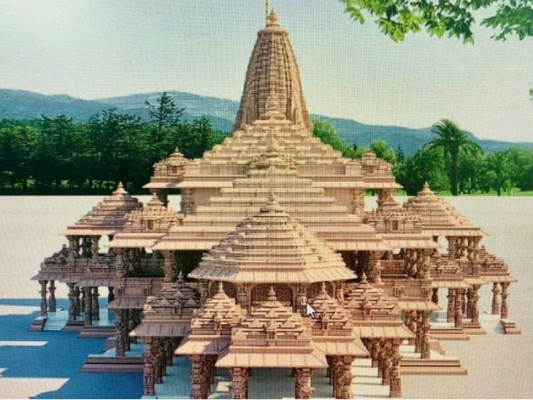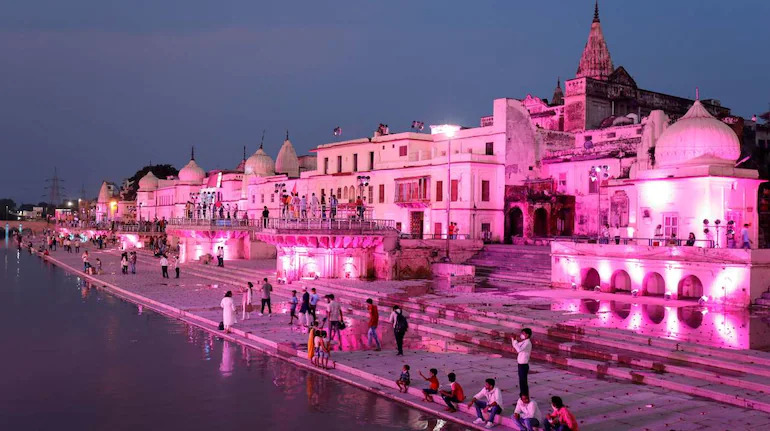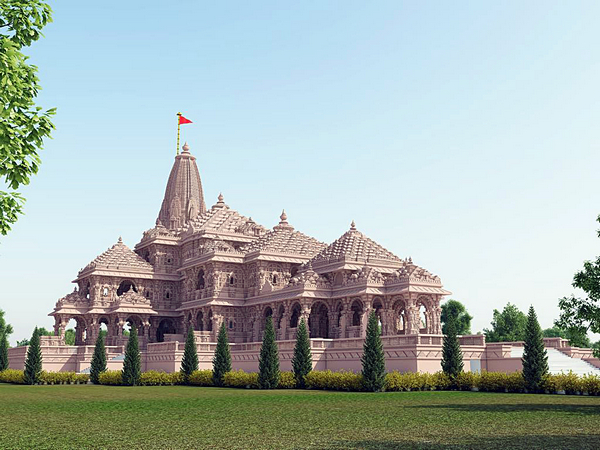


India is a religious capital, home to a wave of tourists pouring in, to experience the realm of spiritualism, in the land of Gods and a country of temples and believers. Ayodhya is a city in Uttar Pradesh, India, the land on which the Hindu Diety Lord Ram was born, in the Treta Yug. It is considered to be one of the seven most sacred cities for Hindus and is believed to be the birthplace of Lord Rama, one of the central figures in Hindu epic, the Ramayana.
Ayodhya has a very cultural history and is mentioned in several ancient Hindu scriptures, including the Ramayana. According to Hindu tradition, Lord Rama, the seventh avatar of Lord Vishnu, was born in Ayodhya and lived there until he was exiled for 14 years. The magnanimous festival of Diwali which is celebrated with great fervour and famously known as the Festival of Lights, was first celebrated in this sacred city upon the arrival of Lord Ram with Goddess Sita upon his victory in the war with Ravana, marking the victory of light over the darkness. It is celebrated every year lighting up the entire country, even visible from the space. It is globally recognised uniting people through the strings of spirituality and love.
The city was also a center of Buddhism and was ruled by different kingdoms and dynasties, including the Maurya, Gupta, and Mughal empires.

Ayodhya, formerly known as Saketa is located in the Indian state of Uttar Pradesh, situated on the banks of the holy river Saryu, and is easily accessible by air, rail, and road.
By Air: The nearest airport to Ayodhya is the Lal Bahadur Shastri International Airport in Varanasi, which is approximately 135 kilometers away. From there, one can take a taxi or take a connecting flight to Lucknow and then drive or take a train to Ayodhya.
By Rail: Ayodhya has its own railway station, which is well connected to major cities in India, including Delhi, Lucknow, and Varanasi.
By Road: Ayodhya is well connected to major cities in Uttar Pradesh by road and is easily accessible by bus or taxi. National Highway 27 also connects Ayodhya to major cities in the region, including Lucknow, which is approximately 135 kilometers away.
The climate in Ayodhya is characterized by hot summers and cool winters. The summer months, from April to June, are extremely hot and temperatures can reach up to 40°C. The monsoon season, from July to September, brings much-needed relief with heavy rains. The winter months, from October to March, are cool and pleasant, with temperatures ranging from 10°C to 20°C.
The best time to visit Ayodhya is during the winter months, from October to March, when the weather is pleasant and ideal for sightseeing and exploring the city's cultural and religious heritage. During this time, several festivals and events, such as Diwali and Ram Navami, are also celebrated in Ayodhya, providing an opportunity for visitors to witness and experience the local culture and traditions.
The ideal number of days to spend in Ayodhya depends on personal preferences and the purpose of the visit. If you're visiting purely for religious and cultural reasons, you can plan a one or two-day trip to visit the key temples and sites in the city, such as Ram Janmabhoomi, Hanuman Garhi, Kanak Bhawan, and Nageshwarnath Temple.
If you would like to take your time to explore the city and its surroundings, you can plan a longer trip of three to four days, during which you can also visit nearby tourist destinations, such as Faizabad, Sita Kund, and Ramkatha Museum.
It is also worth mentioning that Ayodhya is a popular pilgrimage destination and can get crowded during festival seasons and on weekends, so it is advisable to plan your trip accordingly and book your accommodation in advance.

Ayodhya is a city steeped in religious and cultural significance, and there are several attractions that visitors can explore to learn more about its rich history and heritage. Some of the top attractions to explore in Ayodhya include:
1. Ram Janmabhoomi: This is the birthplace of Lord Rama and is considered one of the holiest sites in Hinduism. It is believed that a temple dedicated to Lord Rama was once located here, which was later replaced by the Babri Masjid.
2. Hanuman Garhi Temple: This temple, dedicated to Lord Hanuman, is located in the heart of Ayodhya and is one of the most famous temples in the city.
3. Kanak Bhawan: This temple, located near Ram Janmabhoomi, is dedicated to Lord Rama's wife, Sita. It is believed that Lord Rama gifted this temple to Sita during their stay in Ayodhya.
4. Nageshwarnath Temple: This temple, dedicated to Lord Shiva, is one of the oldest temples in Ayodhya and is believed to have been built during the Ramayana era.
5. Ramkatha Museum: This museum, located near Ram Janmabhoomi, showcases the history and cultural heritage of Ayodhya, including the history of the Ram Janmabhoomi dispute.
6. Faizabad: This city, located near Ayodhya, is the former capital of the Nawabi era and is home to several historical monuments, including the Tomb of Bahu Begum and the Faizabad Fort.
7. Sita Kund: This natural hot spring is located in the nearby town of Sitamarhi and is believed to be the spot where Sita was born.
These are some of the top attractions that visitors can explore in Ayodhya, each offering a unique glimpse into the city's rich history and cultural heritage.
Ayodhya offers a range of accommodation options to suit different budgets and preferences. Some of the popular options for accommodation in Ayodhya include:
1. Hotels: There are several budget and mid-range hotels in Ayodhya, offering basic to comfortable amenities and services. Some of the popular options include Hotel Ram Chandra, Hotel Dharmaveer, and Hotel Amrapali.
2. Guesthouses: For a more affordable option, visitors can opt for one of the many guesthouses in Ayodhya, which offer basic amenities and services at a lower cost.
3. Luxury Resorts: For a more luxurious stay, visitors can choose one of the upscale resorts in Ayodhya, such as Ramkatha Resort and Sita Sarovar Resort. These resorts offer a range of modern amenities and services, including swimming pools, spa facilities, and dining options.
4. Religious Accommodation: For those visiting Ayodhya for religious reasons, there are several ashrams and dharamshalas (religious guesthouses) that offer basic to comfortable accommodation at affordable rates.